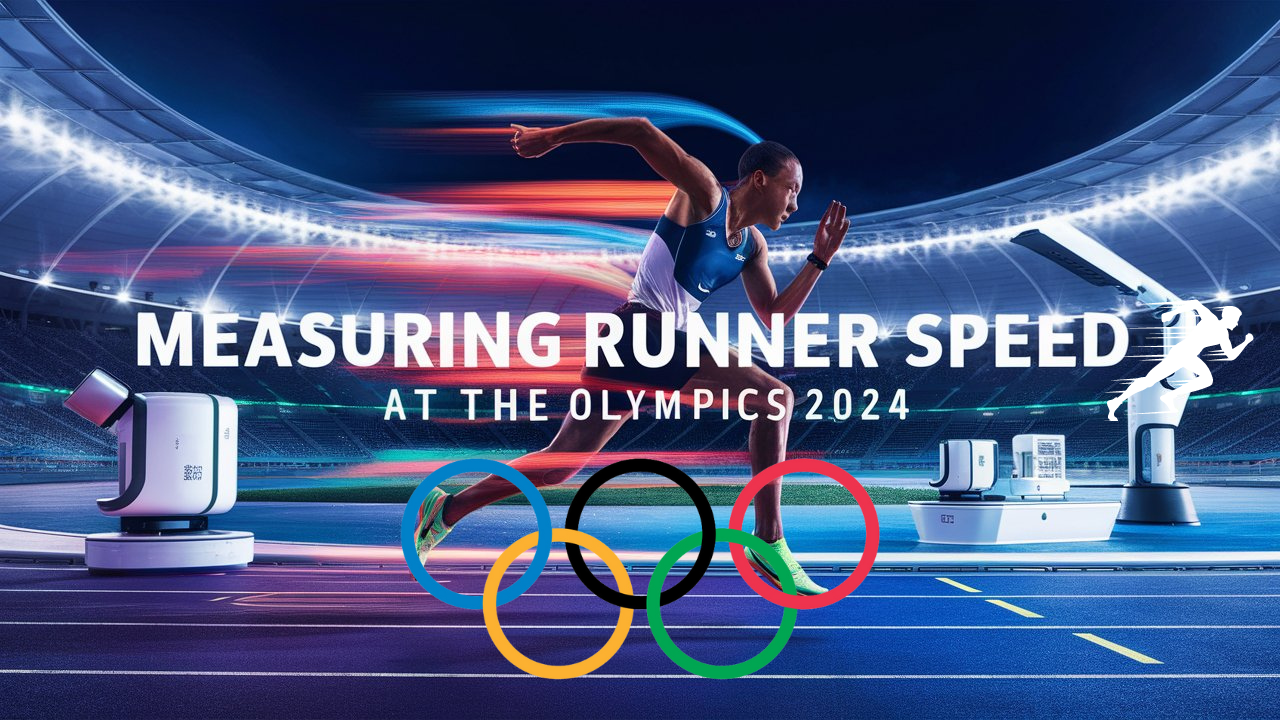As the world gathers to witness the incredible feats of athleticism at the Olympics 2024, the role of technology in enhancing and measuring these performances has never been more critical. Precision, speed, and real-time data collection are at the forefront, ensuring every moment is captured with unparalleled accuracy. Let's delve into the advanced technologies that are making this possible.
High-Speed Cameras and Motion Sensors
Capturing Every Stride with Precision
High-speed cameras and motion sensors have revolutionized the way we measure and analyze runner speed. These devices capture thousands of frames per second, allowing for a detailed analysis of each athlete's stride, form, and speed. Here's how they work:
High-Speed Cameras: These cameras can capture up to 1,000 frames per second, providing an incredibly detailed view of every movement. This helps in identifying the exact moment a runner crosses the finish line and in analyzing their running technique to improve performance.
Motion Sensors: Placed along the track, these sensors detect movement and speed by measuring the time it takes for a runner to pass from one sensor to the next. This data is then processed to give real-time speed readings.
Benefits for Athletes and Coaches
Precision: Provides accurate measurements that are crucial for determining winners and for record-keeping.
Performance Analysis: Helps coaches and athletes understand areas for improvement in technique and form.
Injury Prevention: By analyzing an athlete's form, potential issues can be identified and addressed before they lead to injuries.
Laser Speed Measurement Devices
Real-Time Tracking with LIDAR
Laser speed measurement devices, particularly those using LIDAR (Light Detection and Ranging), offer a non-intrusive way to measure a runner's speed in real-time. LIDAR technology uses laser pulses to measure distances and velocities, providing accurate and instantaneous speed readings.
How LIDAR Works: A LIDAR device emits laser pulses that bounce off the runner and return to the device. The time it takes for the pulses to return is used to calculate the runner's speed.
Real-Time Data: Provides continuous speed data throughout the race, which can be displayed in real-time for spectators and used by coaches for immediate feedback.
Advantages of LIDAR Technology
Non-Contact Measurement: Allows for accurate speed measurement without any physical contact with the athlete.
High Accuracy: Capable of providing speed readings with minimal error, ensuring fair and precise results.
Versatility: Can be used in various conditions and settings, making it suitable for different types of races and environments.
Wearable Technology
Smartwatches and Fitness Trackers
Wearable technology has become an integral part of an athlete's training regimen. Brands like Garmin and Polar have developed advanced smartwatches and fitness trackers that monitor speed, heart rate, and other vital statistics.
Real-Time Data Monitoring: Athletes can monitor their speed, heart rate, and other performance metrics in real-time, allowing them to adjust their effort and technique during the race.
Post-Race Analysis: Detailed data collected during the race can be analyzed post-race to identify strengths and areas for improvement.
Benefits for Athletes
Enhanced Training: Continuous monitoring helps athletes train more effectively by providing insights into their performance.
Health Monitoring: Tracking heart rate and other health metrics can help prevent overtraining and monitor overall health.
Performance Optimization: Real-time feedback allows athletes to make immediate adjustments, leading to better performance during the race.
The Impact of Technology on Athletics
The integration of these advanced technologies in the Olympics 2024 is not just about timing and precision; it's about pushing the limits of human potential. By providing accurate, real-time data, these technologies help athletes optimize their performance, improve their technique, and achieve new heights in their sporting careers.
Outro: Follow Zenka Europe - Stay Informed, Stay Curious
As we continue to explore the intersection of technology and athletics, stay tuned with Zenka Europe for more insights and updates. Follow us to stay informed about the latest advancements and to satisfy your curiosity about how technology is shaping the future of sports.
FAQs
Q: How do high-speed cameras improve the accuracy of race timing?
A: High-speed cameras capture thousands of frames per second, providing detailed images of each moment. This allows for precise measurement of when a runner crosses the finish line, ensuring accurate race timings.
Q: What are the benefits of using LIDAR technology in measuring runner speed?
A: LIDAR technology provides accurate, real-time speed measurements without physical contact with the athlete. It offers high precision and can be used in various conditions, making it ideal for different types of races.
Q: How do wearable devices like smartwatches help athletes during races?
A: Wearable devices monitor real-time data such as speed, heart rate, and other performance metrics, allowing athletes to adjust their effort and technique during the race for optimal performance.
To know more, watch our video on Measuring Runner Speed : https://youtube.com/shorts/2Atu4KM2yak
Connect with Us:
Visit Our Website : https://zenkaeurope.com/
Contact Us : info@zenkaeurope.com
Follow Us on Social Media:
Twitter : https://x.com/ZenkaEurope
YouTube : https://www.youtube.com/@ZenkaEurope
LinkedIn : https://www.linkedin.com/company/zenka-europe-uab/
Instagram : https://www.instagram.com/zenka_europe/
Facebook : https://www.facebook.com/zenkaeurope
